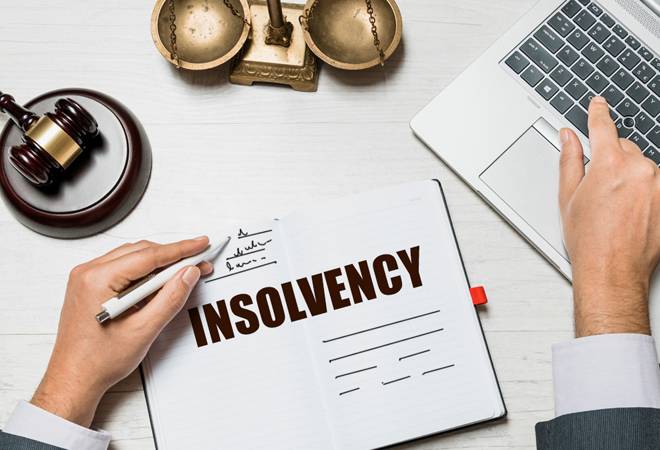The Main Principles Of Insolvency Practitioner
Wiki Article
Insolvency Practitioner Fundamentals Explained
Table of ContentsInsolvency Practitioner - An Overview6 Simple Techniques For Insolvency PractitionerInsolvency Practitioner for Beginners6 Simple Techniques For Insolvency Practitioner9 Simple Techniques For Insolvency PractitionerThe Ultimate Guide To Insolvency Practitioner9 Easy Facts About Insolvency Practitioner Shown
Insolvency is when obligations are higher than the value of the business, or when a borrower can not pay the debts they owe. A firm can come to be financially troubled due to a variety of scenarios that cause bad capital. When faced with insolvency, a service or person can call financial institutions directly and restructure financial debts to pay them off.Service owners might get in touch with lenders straight and restructure financial obligations into more convenient installments. Lenders are typically open to this method because they desire to be paid off and prevent losses, even if the settlement is on a delayed timetable.
Not known Details About Insolvency Practitioner
The owner creates a proposal detailing exactly how the financial debt may be reorganized using cost decreases or various other plans for assistance. The proposal shows creditors how the service may produce adequate cash money flow for successful procedures while paying its debts. Typically, a forgiven debt might be considered income by the Internal Revenue Service (IRS).
The 20-Second Trick For Insolvency Practitioner
Business might wind up paying huge quantities of cash in damages and be overcome operations. When procedures cease, so does the company's income. Absence of income causes unpaid bills and lenders asking for money owed to them. Some firms come to be financially troubled due to the fact that their items or services don't develop to fit customers' transforming demands.Expenditures exceed earnings and costs stay unsettled. Sorts of bankruptcy include cash-flow bankruptcy and balance-sheet insolvency. Cash-flow insolvency occurs when a business has the properties to cover their financial obligations yet they remain in the incorrect form, such as genuine estate as opposed to fluid funds. Balance-sheet insolvency, on the other hand, suggests an absence of properties in any kind to cover financial debts.
The IRS states that a person is insolvent when the overall responsibilities go beyond complete properties. A bankruptcy, on the various other hand, is a real court order that depicts how a bankrupt individual or service will certainly repay their financial institutions, or exactly how they will certainly sell their properties in order to make the payments.
Some Of Insolvency Practitioner

Recognizing the variables that can cause insolvency, such as overspending, can aid you prevent insolvency and its consequences.
Insolvency Practitioner Things To Know Before You Buy
It is popular that directors and policemans of firms (and managers of limited obligation companies) owe fiduciary duties to their organizations and their shareholders (or participants). These fiduciary obligations are specified by state laws and, though there are variants from state to state, they typically consist of a responsibility of commitment and a responsibility of treatment.
The responsibility of treatment calls for directors and officers to exercise diligence, to make enlightened choices, and to act in great faith to ensure that their actions are in the most effective interest of the business. Past the extent of this discussion, some states allow these duties to be restricted either by so noting in the organizational papers or complying with other requirements.
The 6-Minute Rule for Insolvency Practitioner
A lot of states define insolvency in 2 methods( 1) when a firm's liabilities come to be higher than the amount of its properties or (2) when the firm comes to be incapable to pay its debts as they become dueand welcome both interpretations (Insolvency Practitioner). The change in duties visit their website happens due to the fact that when a firm is bankrupt, there is no worth in the firm past that why not find out more owed to the company's financial institutions so that the equity holders no more have an economic risk in the firmBeware about offering shareholders favoritism at the cost of creditors (e.g., licensing and moneying a returns or a stock redemption). Beware concerning advantageous therapy between courses of investors. Clear up initiatives to find out all the realities prior to taking a specific program of action; supervisors need to really believe that any choices made are in the ideal passions of the company in its entirety (i.e., choices will certainly be examined in hindsight taking into account the result of such actions on the company).
In any personal bankruptcy or insolvency case, repayments made to certain financial institutions at the expenditure of other lenders can be clawed back, especially if there is some link between the business and the lender. Consider suggesting at a yearly stockholder meeting (or any kind of other conference of shareholders) a resolution attesting that all her response previous organization decisions and activities taken by the supervisors and officers of the firm were absorbed good confidence after an exercise of sensible treatment.
Unknown Facts About Insolvency Practitioner
Totally divulge any type of individual or service partnerships with events on the various other side of deals entailing the corporation to avoid the appearance of a conflict of rate of interest. In evaluating possible fund raising deals or a sale of assets of the troubled firm, know that these purchases may be inspected later on taking into account any type of succeeding development of supervisors' fiduciary obligations to consist of lenders.Report this wiki page